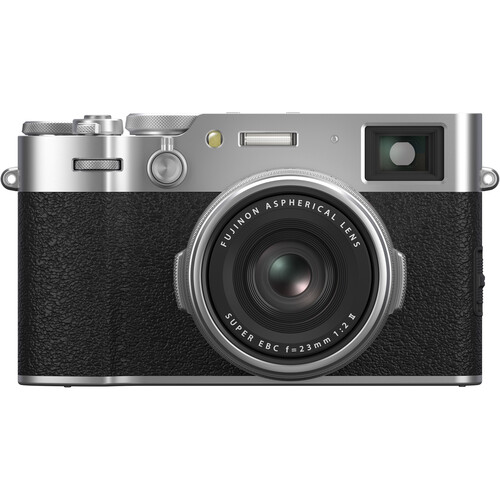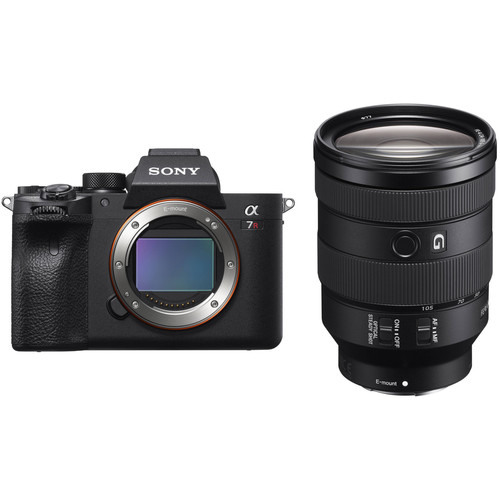
FUJIFILM X100VI 40.2MP APS-C with 23mm f/2 Lens
It’s been since 2019 that I’ve reviewed a Fujifilm camera and that’s a shame. I forgot how much I’ve enjoyed the Fujifilm platform. If my memory serves me correctly the original X100 was the first X series camera I ever reviewed!
While there are numerous improvements that addressed my complaints of the early x100 and x100s, the form factor and purpose remain the same – and that’s a good thing. What’s more, the support for teleconverters means that you can get a little more functionality out of this fixed length permanently attached lens – if you so desire.
Overview
You can click the photo at the top of the article to get all the specs at B&H, so I’m not going to bore you with that. I’m also going to get closer to the modern era by introducing this camera with a video overview instead of a wall of words:
It’s a super well built and designed camera that really has few faults for someone interested in this formfactor and feature set.
Real World Images
Click here to see a gallery of some of the photos I took using the X100VI during my time reviewing it. As usual, these are all straight out of the camera with one notable exception. This camera supports HEIF, but Zenfolio doesn’t provide a good way to give you direct access to them, so I had to convert all HEIF files to JPEG (when applicable). Inline images were resized by Zenfolio, but you can download full size originals of the images that Lightroom converted from HEIF to JPG for inclusion in this gallery.
Here are my thoughts on a few photos that I found worth discussing:
Here’s one of the first pics I took with this camera right out of the box with the camera default settings and before I bothered to read the manual to refresh my memory on how to set the autofocus point:

f/2 @ 23mm for 1/125 sec at ISO 1250
As you can see the bokeh is fabulous and the detail is quite good in the raindrops despite, literally pointing and shooting like a newbie to cameras would do! If you want to know what do you really get over a cell phone, here’s a good place to start looking!
I was also pleased that for ISO 1250 that it looked this good to begin with. This particular photo was the exact in-camera JPEG as I hadn’t discovered yet that it supported HEIF at this point in the review.
Here’s another impressive handheld shot at only 1/35 sec yet the gloomy day required ISO 8000! The detail and default processing was amazing:

f/5.6 @ 23mm for 1/35 sec at ISO 8000
I was super impressed with the detail of the fine grain details in the center of the flower that didn’t get destroyed by in-camera noise reduction, and the default color was fantastic!
Here’s a jaw dropping example of the quality of this lens and the in-camera images event at ISO 5000:

f/6.4 @ 23mm for 1/35 sec at ISO 5000
I’m very pessimistic these days about lugging cameras around as cell phones have become so good, but this definitely reminded me that I might need to spend more time with the latest cameras again as this was a very impressive result!
Here’s a pretty boring photo, but again these were camera default settings doing pure point and shoot (except I did manually set the aperture). In this case I was too lazy to lay on the ground, so I just held the camera down at the level of the slug, tapped the screen like I’d do with my phone and took several photos:

f/8 @ 23mm for 1/35 sec at ISO 5000
This did pretty good knowing how I took the shot – especially with a 23mm lens not known for being a good focal length for macro photography.
On a camping trip to the North Cascades in Washington, I woke up to see this beautiful scene so I grabbed the camera and just did a quick snap before going back to bed.

f/16 @ 23mm for 1/35 sec at ISO 800
This shot would be one of my first experimentations with a large f stop number to see if there have been massive improvements with diffraction, but ultimately that didn’t appear to be the case.
A little later I’d try again (below), but still the trees in the background are pretty soft for f/16:

f/16 @ 23mm for 1/35 sec at ISO 500
In brighter conditions at a low ISO, the f/16 results were significantly better so the poor quality of the previous two photos may have been attributed to the fog and losses caused by noise reduction.

f/16 @ 23mm for 1/40 sec at ISO 125
By this point I had also enabled the Velvia film simulation mode which Fujifilm is famous for, and it did not disappoint. The colors were amazing for this scene – if you like vivid images. If not, there’s a wide variety of film simulations to suit your taste.
I love the Velvia film simulation in the woods, but some might be turned off with how it crushes some of the shadow areas as shown at the base of the trees in this shot:

f/11 @ 23mm for 1/35 sec at ISO 2000
It also gives the water a more of an unnatural tint so some might find it better to manually process a shot like this from raw to get the best results.
Without resorting to manual settings or flash, I just took this picture of Kai (yeah, he’s grown up) the way a newbie would using default settings:

f/2.8 @ 23mm for 1/150 sec at ISO 125
This is a type of shot where modern phones with their in-camera HDR can’t be beat – the results are very disappointing, so amateurs will need a better understanding of light (e.g., turn Kai into the light and avoid harsh backlight) or they’ll be frustrated compared to what they see they can accomplish with their phone.
Case in point, here’s what a iPhone 13 Pro photo of Kai taken in the same exact spot looked like straight from the phone:

Apple iPhone 13 Pro f/2.8 @ 9mm for 1/121 sec at ISO 64
So, if your goal is to take advantage of the shadows and get a more creative lighting shot then iPhone will be frustrating, but if you want a no brainer shot that is easy and just does HDR perfectly, it’s still tough to beat the best smart phones.
Here’s another example where the lighting was much more favorable:

f/4 @ 23mm for 1/250 sec at ISO 125
Yet, despite great light and God’s soft box being out in full force, with no exposure compensation the image was rather dark. Again, compared to the iPhone where the results were much more pleasing:

Apple iPhone13 Pro f/1.5 @ 5.7mm for 1/1377 sec at ISO 50
Right after this shot I started experimenting with the eye auto focus feature and got a much better result:

f/2 @ 23mm for 1/480 sec at ISO 125
This made me suspect that the default metering was to blame, so had I changed that setting I could have got results that are actually superior to the iPhone.
This also made me think about selfies – the feature that smart phone users seem to love the most. While I was out on the lake with my wife, I took a shot of my ugly mug completely blind but using the eye auto focus feature:

f/4.5 @ 23mm for 1/35 sec at ISO 160
This time, despite the sun setting with mediocre light, it did great. I’m also pleased to report that my old face didn’t destroy the camera. The Velvia mode made my skin appear a little more red than I’d like, but the rest of the scene looked great.
I was very satisfied with the quality of the lens and the super sharp details found in so many of the photos I took:

f/8 @ 23mm for 1/35 sec at ISO 500
This combined with great high ISO performance and visually satisfying colors (IMHO), made me happy to have this camera with me for my trip to the mountains.
I got a chance to give the burst mode a shot out on the ice, and while my framing was terrible, the results were good for this class of camera. Shooting on ice is tough so this is where you’ll need to experiment with the exposure compensation (+2 in this case), the white balance (florescent), and much more:

f/2.2 @ 23mm for 1/500 sec at ISO 1250
For the shots in this series I used the eye autofocus to see what it could do and I was satisfied with the results. I sucked, but the camera did its part. The iPhone was much easier to use, but I preferred the color I got using the X100 VI.
Video
While I did experiment a little bit with the video features, those who know me know that I’m not really a videographer. As a result, I can only say that it offers a wide variety of formats and settings that are certain to be superior to results found on a phone,
Viewfinder
The viewfinder on this camera supports both optical as well as digital, and that’s a good thing. The optical offers a traditional photography experience whereas the digital offers a way to see photos as they will appear on your computer or phone even in the harshest sunlight. It also provides a way to save battery when you elect to enable the EVF and turn off the rear display.
Conclusion
Once again I was reminded of the magic of Fujifilm and wasn’t disappointed one bit. Thanks to the Q menu, the touch screen and great controls, I was able to quickly dial in my favorite settings in a hurry to get the shots that I wanted. While I haven’t included many of those photos here for personal reasons, I do find this to be an extremely easy camera to use for those who understand the settings and features it offers.
I never had any battery life issues and could easily go a few days under normal usage without having to worry about recharging. When I did, I appreciated the support for USB-C to get a quick charge right in the camera.
Overall, this is a camera for photographers – not newbies – mainly because the best results will be achieved by knowing how to dial in the best settings. If you want smartphone results, use a smartphone, but if you are wanting better control over the lighting, color, shadows, and shutter speed, then this camera is going to be much more satisfying to use. If that's you, then I highly recommend this camera.
Where to Buy?
CLICK HERE to learn more or buy today, or click here see other great cameras in the Fujifilm X-Series line up.
Disclosure
If you make a purchase using links found in this article, I may make a commission. It doesn’t cost you a penny more, but it does help to support future articles




















































